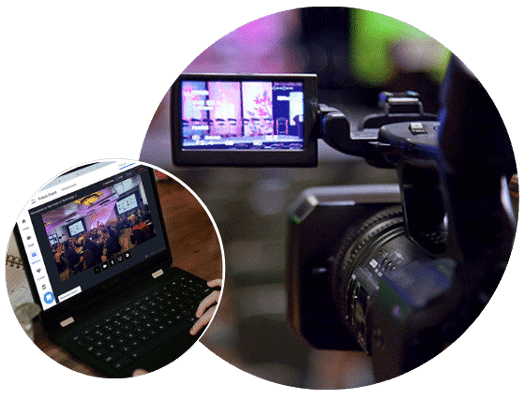Stylish Event Designs by Your Event Source Charlotte for Memorable Moments.
Stylish Event Designs by Your Event Source Charlotte for Memorable Moments.
Blog Article
Why Occasion Source Solutions Are Important for Seamless Event-Driven Designs
In the realm of modern-day software application growth, event-driven styles are significantly common, yet their performance hinges on the implementation of robust event source remedies. As markets change towards real-time data processing, comprehending the ramifications of occasion sourcing ends up being necessary.
Understanding Event-Driven Styles
Event-driven architectures (EDAs) represent a standard shift in designing software systems, where the circulation of details is determined by the event of occasions. This architectural design advertises a decoupled method, allowing various components to connect asynchronously. In EDAs, events function as the main means of communication, triggering procedures or operations in response to certain incidents, such as user activities or system adjustments.
The secret components of an EDA include occasion manufacturers, which produce events; event consumers, which react to occasions; and event networks, which help with the transmission of occasions between manufacturers and consumers. This framework boosts system responsiveness and scalability, as parts can separately refine events without the requirement for concurrent interaction.
Furthermore, EDAs enable real-time data processing, making them appropriate for applications needing instant understandings-- such as scams discovery in economic systems or keeping track of IoT tools. They also support an even more agile development environment, enabling teams to repeat quickly and deploy new attributes with very little disturbance to existing services.
The Role of Event Resource Solutions
While various parts in an event-driven architecture rely upon effective interaction, occasion resource services play an important role in creating and taking care of the circulation of occasions. These remedies work as the first point of occasion production, recording adjustments in state or customer actions and equating them right into occasions that can be propagated through the system.

Furthermore, they facilitate the decoupling of manufacturers and consumers within a design, permitting systems to range independently. This decoupling is essential for boosting system durability, as it reduces dependencies that could otherwise bring about bottlenecks or single factors of failure.
Advantages of Real-Time Information Handling
Real-time information handling significantly enhances the abilities of event-driven architectures by enabling immediate understandings and activities based on the current info (your event source charlotte). This immediacy not only speeds up decision-making yet also increases the relevance and accuracy of those choices. Organizations can react to events as they take place, lowering latency and enhancing operational agility
Among the primary benefits of real-time data processing is the capacity to record and analyze data continually. This assists in positive steps rather than responsive feedbacks, allowing companies to anticipate fads and prospective concerns before they escalate. In sectors such as finance or e-commerce, real-time analytics can identify illegal transactions or consumer behavior changes, allowing quick treatments that reduce threat and maximize customer contentment.

Eventually, the assimilation of real-time information handling right into event-driven styles empowers companies to harness the full possibility of their data, driving development and affordable advantage in an increasingly dynamic industry.
Enhancing System Communication
Reliable interaction between systems is vital for the success of any event-driven architecture. Occasion source remedies facilitate this interaction by giving a durable framework for catching and transmitting occasions in actual time. By standardizing exactly how systems create and consume occasions, these options eliminate obscurity and foster interoperability, allowing disparate systems to collaborate perfectly.
Making use of event streams enables he has a good point systems to respond immediately to adjustments, ensuring that all components are straightened and educated. This responsiveness is essential in environments where timely information exchange directly impacts decision-making and general system performance. Furthermore, occasion resource options offer systems for event filtering, makeover, and transmitting, improving the effectiveness of data circulation between systems.
In addition, by executing a publish-subscribe design, occasion resource remedies decouple system parts, official site enabling better flexibility and scalability. This decoupling implies that systems can progress separately, making it simpler to incorporate new functionalities or replace existing parts without interfering with total communication.
Future Trends in Event Sourcing


An additional significant fad is the rise of cloud-native occasion sourcing remedies. These platforms leverage the scalability and adaptability of cloud facilities, enabling organizations to effectively take care of and store substantial quantities of event data without the overhead of traditional systems. This change promotes greater availability and partnership throughout teams.
Moreover, the fostering of microservices architecture is affecting occasion sourcing practices. As services progressively sector their applications right into smaller, independent solutions, event sourcing gives a robust mechanism to preserve data consistency and honesty throughout these dispersed systems.
Verdict
To conclude, occasion resource solutions serve as a critical foundation for smooth event-driven architectures, allowing effective event generation and administration. By assisting in asynchronous communication in between components, these options boost system resilience and advertise the independent development of services. The benefits of real-time information processing and enhanced system communication emphasize the value of adopting occasion sourcing methodologies. As the need for robust dispersed systems rises, the importance this content of occasion source services will remain to grow, forming the future of event-driven design.
Report this page